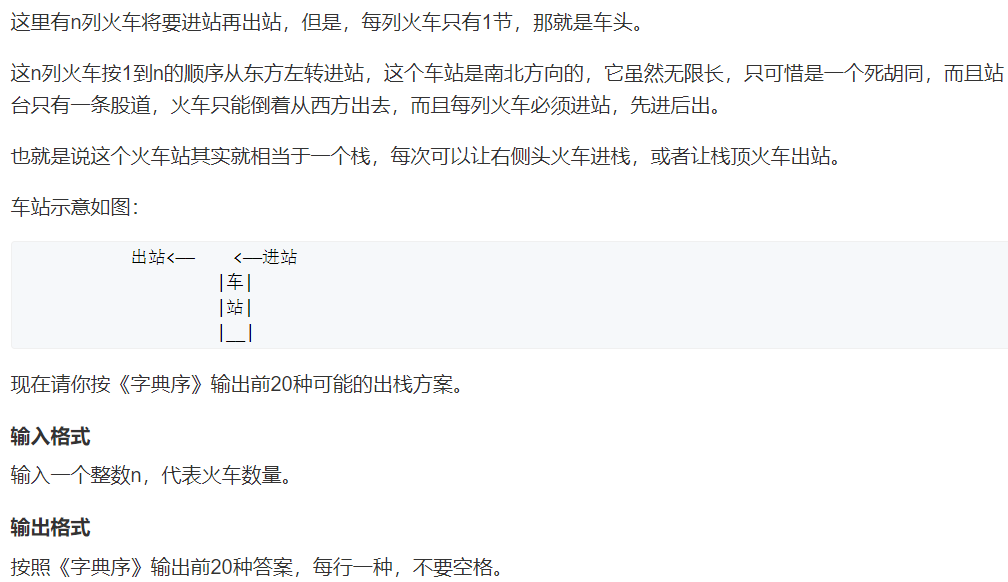

1 #include <bits/stdc++.h> 2 using namespace std; 3 const int N = 30; 4 int n; 5 int cnt = 20; 6 vector<int> state1; //已出栈的火车序列 7 stack<int> state2; //已入栈的火车序列 8 int state3 = 1; //未入栈的火车,注意初始值为1 9 void dfs() { 10 if (!cnt) { //如果cnt减为0了 11 return; 12 } 13 if (state1.size() == n) { //如果全部出栈了 14 cnt--; 15 for (int i = 0; i < state1.size(); i++) { 16 cout << state1[i]; 17 } 18 cout << endl; 19 return; 20 } 21 //枚举两种操作 22 //为保证字典序,先枚举出栈,后枚举入栈 23 if (state2.size()) { //开始枚举出栈 24 state1.push_back(state2.top()); 25 state2.pop(); 26 dfs(); 27 //恢复现场 28 state2.push(state1.back()); 29 state1.pop_back(); 30 } 31 if (state3 <= n) { //开始枚举入栈 32 //state3 <= n表示还有火车没有入栈 33 state2.push(state3); 34 state3++; 35 dfs(); 36 //恢复现场 37 state2.pop(); 38 state3--; 39 } 40 } 41 int main() { 42 cin >> n; 43 dfs(); 44 return 0; 45 }